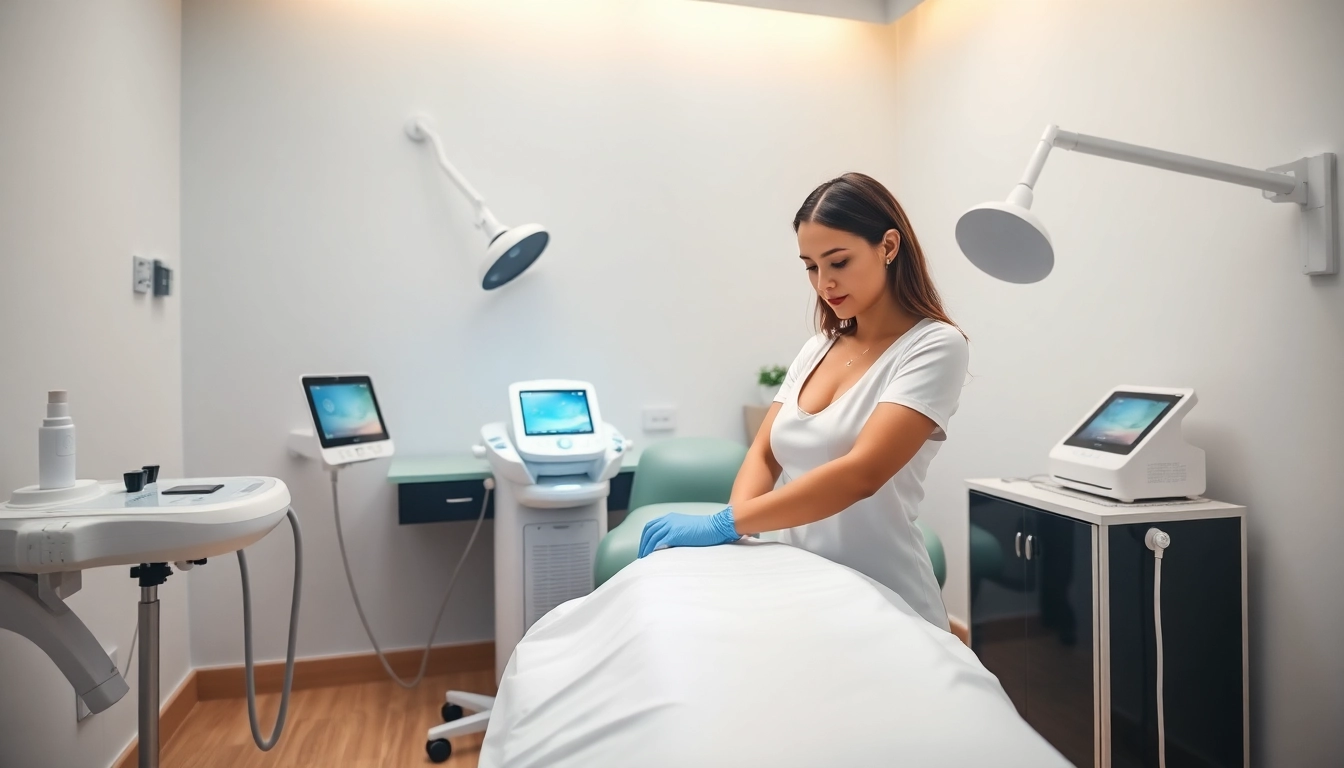
What is Noninvasive Lipo?
Noninvasive lipo, a term commonly used in the cosmetic industry, refers to a variety of procedures designed for fat reduction without the need for surgical intervention. This approach provides an accessible alternative to traditional liposuction, catering to individuals who want to eliminate stubborn fat without undergoing extensive surgery or dealing with significant recovery time. The allure of noninvasive lipo stems from its convenience, safety, and efficiency.
Overview of Noninvasive Techniques
There are several recognized techniques under the umbrella of noninvasive lipo. These methods utilize different technologies to break down fat cells in targeted areas. Some popular procedures include:
- Cryolipolysis: Also known as CoolSculpting, this technique employs extreme cold to freeze and destroy fat cells. The process usually requires no anesthesia and minimal recovery time.
- Laser Lipolysis: This involves the application of laser energy to emulsify fat beneath the skin, facilitating its elimination. This method is known for its precision and minor discomfort.
- Radiofrequency Lipolysis: Here, heat is used to reduce fat layers and firm the skin simultaneously, targeting both fat and collagen production.
How It Differs from Traditional Liposuction
The main distinction between noninvasive lipo and traditional liposuction lies in the approach: while liposuction involves surgical incisions to remove fat deposits, noninvasive techniques harness energy (like cold, heat, or ultrasound) to treat fat without any cuts. Traditional liposuction may require anesthesia, significant downtime, and risks associated with surgical procedures, whereas noninvasive options typically have minimal side effects and quick recovery times.
Popular Noninvasive Lipo Procedures
Along with cryolipolysis and laser lipolysis, other notable noninvasive fat reduction procedures include:
- Ultrasound Fat Reduction: This technique uses focused ultrasound waves to rupture fat cell membranes, which allows the body to process and eliminate fat naturally.
- Injection Lipolysis: Involves injecting compounds that dissolve fat cells directly into a targeted area. The most recognized agent is deoxycholic acid, which the FDA has approved for submental fat reduction.
Benefits of Noninvasive Lipo
Reduced Downtime and Recovery
One of the most significant advantages of noninvasive lipo is its minimal recovery time. Unlike surgical fat removal techniques, patients can often return to their daily activities almost immediately following the procedure. For instance, many individuals who undergo CoolSculpting can resume exercise and work the same day.
Safety and Effectiveness
Noninvasive procedures are generally regarded as safer than traditional liposuction. Since they do not require significant incisions or anesthesia, the risks of complications, such as infection or excessive bleeding, are considerably lower. Additionally, many studies and clinical trials have demonstrated the effectiveness of these methods in reducing fat layers while maintaining skin integrity.
Long-term Results and Maintenance
Many noninvasive lipo techniques are designed to offer lasting results, especially when combined with a healthy lifestyle. For example, a study indicated that patients who followed a balanced diet and regular exercise after cryolipolysis treatments reported up to 20% reduction in fat thickness in the treated area even after one year.
Preparing for Your Noninvasive Lipo Session
Consultation and Assessment
Before undergoing any noninvasive fat reduction procedure, it is vital to schedule a thorough consultation with a qualified practitioner. During this session, potential candidates should discuss their medical history, review expectations, and receive an examination to ascertain their suitability for the procedure. Proper assessment ensures personalized treatment plans designed to deliver optimal results.
Post-Treatment Instructions
After the treatment, clinicians typically provide comprehensive post-care instructions to maximize results. Common recommendations may include:
- Avoiding vigorous exercise for a few days post-treatment
- Staying hydrated to assist in the elimination of fat cells
- Maintaining a balanced diet
Setting Realistic Expectations
Understanding what to expect from noninvasive lipo is crucial. These procedures are not weight loss methods; instead, they are designed to contour specific areas. Patients might initially see swelling or redness, but outcomes typically become evident within weeks, sometimes as soon as two to three months post-treatment.
Common Myths about Noninvasive Lipo
Debunking Misconceptions
Many myths surround noninvasive lipo. A prevalent misconception is that these methods can replace a healthy diet and exercise. In reality, while noninvasive lipo can effectively reduce fat in localized areas, maintaining lifestyle changes is essential for long-lasting results. It’s also believed that noninvasive lipo leads to dramatic weight loss, which is misleading; ideal candidates are often those already close to their target weight.
Understanding the Limits of Noninvasive Treatments
Noninvasive techniques are not suitable for everyone. Individuals with large amounts of excess fat may benefit more from traditional surgical options. Furthermore, the results may vary among individuals, depending on factors like body type, lifestyle, and adherence to post-treatment guidelines. Communicating openly with a qualified practitioner is invaluable to align expectations accurately.
Who Should Consider Noninvasive Lipo?
Noninvasive lipo is ideal for adults who are in good health, close to their desired weight, and looking for fat reduction specifically in stubborn areas. It’s also frequently sought by individuals unsure about undergoing surgical procedures but wishing to improve their body contouring.
Aftercare and Recovery Tips for Noninvasive Lipo
What to Expect Post-Treatment
Post-treatment experiences can vary but often include mild discomfort, swelling, or bruising in the treated area. Patients should be reassured that these symptoms are temporary and typical following a noninvasive fat reduction procedure. Recovery is usually rapid, enabling most individuals to return to their regular routines shortly after treatment.
Recommended Aftercare Practices
Caring for oneself post-procedure is vital for optimal results. Here are some recommended practices:
- Follow all guidance provided by the practitioner regarding activity levels.
- Engage in gentle activities like walking to promote circulation.
- Monitor areas treated for excessive swelling or unusual changes, and consult a practitioner if concerns arise.
Monitoring Results Over Time
While many patients notice changes shortly post-treatment, the most visible results may not be noticeable until several weeks or even months later. Maintaining a lifestyle that includes a healthy diet and physical activity increases the chances of sustainable results, offering a confident and contoured silhouette in the long run.